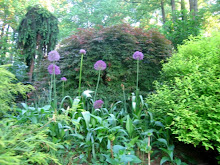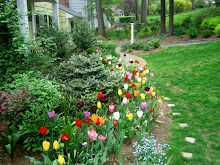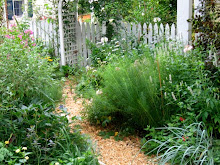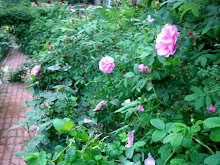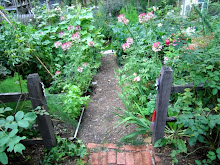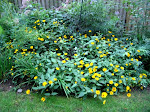
My friends over at Gardening Gone Wild asked me to write to you to discuss the status of our current dispute. While I have such a harmonious relationship with so much of the other wildlife in the garden--the birds, the toads, the salamanders--I regret that our relationship has become so acrimonious, particularly as it relates to the vegetables.
While I am flattered that you like the vegetables as much as (or perhaps even more than) we do, I find that your appetites leave something to be desired, namely leftovers. Last year, the garlic spray kept you away from many of the vegetables, but I was disappointed to still find teeth marks on my vine-ripened tomatoes and zucchinis, not to mention the fruitless pumpkin and watermelon vines whose flowers you devoured. I can no longer bear your rude interruptions.
Best wishes,
Heirloom Gardener
.
UPDATE: Part 2 of this series discusses adding chicken wire around the post and rail fence. Part 3 of this series discusses reinforcements to chicken wire raised bed cover after a break-in.
.
Related posts:
- Advice Wanted: How to Keep Rabbits Out of the Garden
- Keeping the Deer Out of the Backyard: the Deer Fence
- Keeping the Groundhog Out of the Cutting Garden
- Organic Pest and Fungus Control: Garlic Barrier - Yes, It Really Works
- Organic Rose Gardening: Dormant Oil Application for Pest Control
- Organic Pest Control: Colorado Potato, Threelined Potato, and Japanese Beetles



























